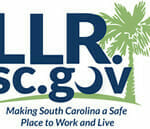- Course No E – 1389
- PDH Units 6.00
No data found for Custom Course Number
No data found for Custom Course Units
- Course No E – 1389
- PDH Units 6.00
Intended Audience: civil engineers
PDH UNITS: 6
This course discusses how to effectively use pavement markings to guide roadway traffic, and thereby reduce your liability exposure. The contents of this course are intended to serve as guidance and not as an absolute standard or rule. Its purpose is to help you to use the Manual on Uniform Traffic Control Devices (MUTCD) – Parts 3, 5, 7, 8 and 9 more effectively and not replace it. Nationwide consistency is the goal of the MUTCD by requiring uniform, understandable, and effective devices. Should there be any discrepancies between the contents of this course and the MUTCD - always follow the MUTCD. The course objective is to give engineers and designers an in-depth look at the principles to be considered when designing for traffic control. Upon course completion, you should be familiar with the general design guidelines for roadway pavement markings. The Manual on Uniform Traffic Control Devices for Streets and Highways (MUTCD) 2009 Edition will serve as a course reference for the fundamental design principles of pavement markings. The MUTCD is recognized as the national standard for all traffic control devices installed on any street, highway, bikeway, or private road open to public travel. Any traffic control device design or application contained within it is considered to be in the public domain and available for use.
Learning Objectives
At the successful conclusion of this course, you’ll be able to identify and discuss:- Basic requirements of traffic control devices
- Retroreflectivity
- Pavement marking categories and usage
- Location and placement considerations for markings
- Various types of pavement markings and their applications
- Raised Pavement Markers
- Delineator design
- Channelization devices
- Traffic islands
- Rumble strips
- Maintenance issues
Once completed, your order and certificate of completion will be available in your profile when you’re logged in to the site.










